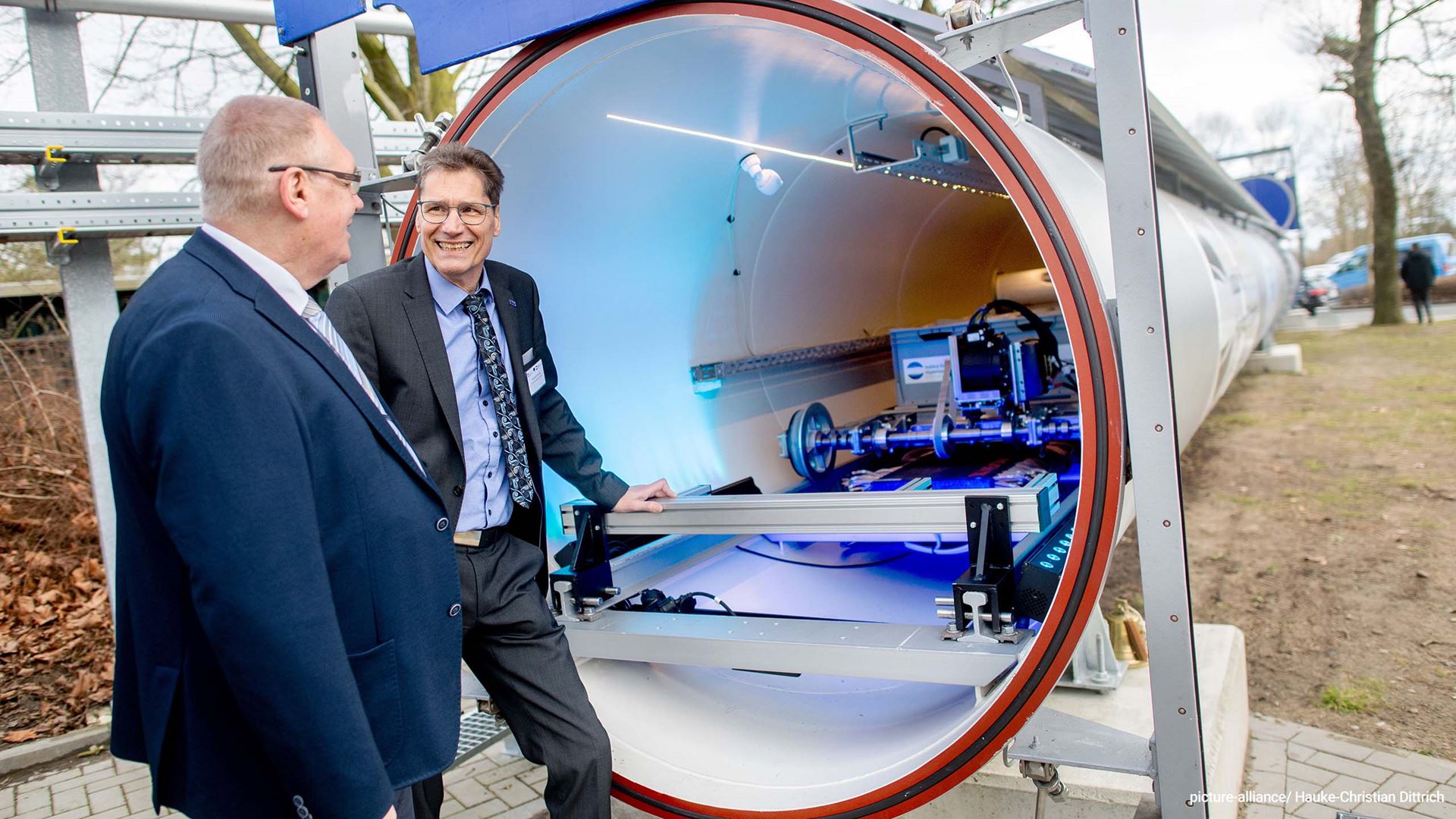Although the Hyperloop has not really taken off in the last ten years, it remains extremely popular. Why is that? Are those who believe in it right after all? A visit to the test facility at Emden/Leer University of Applied Sciences in East Frisia where the Hyperloop appears reborn.
If you’re not feeling up to the short journey from your hotel to the university campus in Emden, you could always call a taxi and rely on the driver’s navigation. “Hyperloop? Oh, you want to go see our tube, why didn’t you just say that!” The goTube test tube is located close to the university and has solar panels on top to provide additional energy when transport capsules, known as pods, race through the vacuum inside the tube at speeds of up to 750 km/h. However, the test facility was not designed for such speeds; during a test run, 45 km/h was reached – but it’s moving in the right direction.
Measuring 27 metres in length and just 1.6 metres in diameter, Emden’s ‘tube’ is the longest Hyperloop track in Germany and is expected to be a great success. “Environmentally friendly and energy-efficient high-speed mobility – at the Emden/Leer University of Applied Sciences, this vision is becoming a reality,” is the message associated with the goTube test tube by industry and science.
Hyperloop is set to launch in Europe in 2030
The Hyperloop team at Emden University is part of a European network. Emden scientists have joined forces with Hyperloop developers, railway operators, engineering firms, and research institutions from 13 countries to establish the ‘Hyper4Rail’ project. The consortium’s goal is to industrialise Hyperloop technology by 2030 and deploy it on a large scale across Europe.
“In the first stage of development, what we have in Emden is a wheel-rail concept,” explain project initiators, professors Dr Walter Neu and Dr Thomas Schüning. “The most important element is the tube, in which a negative pressure of around one per cent of atmospheric pressure is generated, which is between one and ten millibars. This reduces air resistance, which causes the greatest energy loss at high speeds. This enables us to travel at speeds of 500 to 800 km/h using minimal energy.” The Hyperloop will also be climate-neutral in its largest expansion stage, as it will cover its energy requirements using solar panels attached to the outside of the tube.
Watch the video interview and continue reading on Gateway to Automotive.

